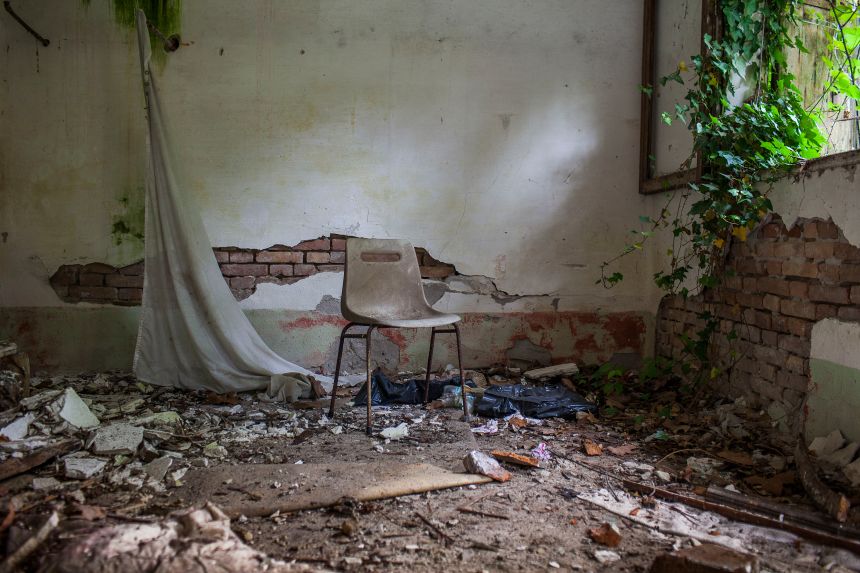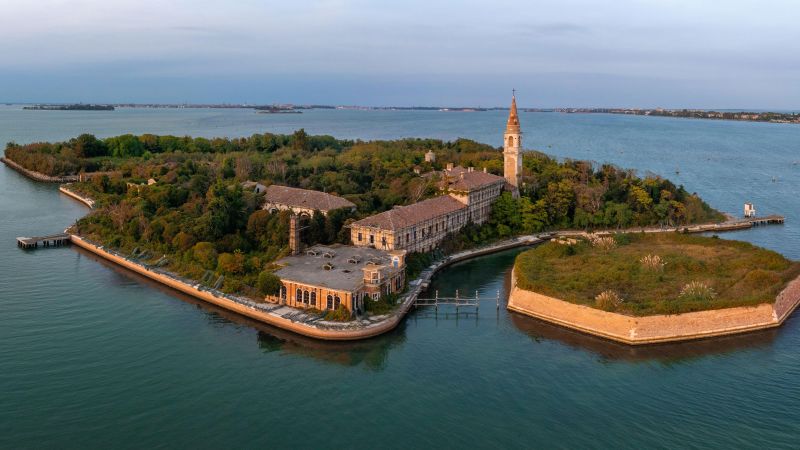Venice
—
The abandoned Venetian island of Poveglia — site of a plague pit and former asylum — is about to take on a happier new identity.
On August 1, a group of Venetians will take possession of the supposedly haunted island under a 99-year lease from the Italian state and embark on a project to turn it into an urban park open only to residents of the Italian city.
The locals fought off stiff competition from property developers to ensure Poveglia remained a public asset.

In 2014, the island, which is around 7.5 hectares (18.5 acres) in size and sits in the southern part of the Venice lagoon, was put on an auction list by the Italian State Property Agency, opening it up to developers tempted by its peaceful but convenient location just three miles from St. Mark’s Square.
Several consortia raised money to buy it, including one tied to Luigi Brugnaro, the current mayor of Venice, whose group raised 513,000 euros ($600,000) but failed to gain approval from the state.
Horrified at the prospect of the island being sold to a private buyer, Patrizia Veclani formed a group, Poveglia per Tutti (Poveglia For Everyone), to try to save the island and others like it that are on the government’s auction list.

The group, which has more than 4,500 members, managed to raise 460,000 euros ($539,000) and secure the lease.
“It wasn’t just outrage, it was psychologically traumatic to realize that the city could be broken up and sold to the highest bidder, without a starting price, without even a plan. It’s as if Rome were to decide to sell the Trevi Fountain. Venice and its Lagoon are one, inseparable,” Veclani said at a public forum last month, before the winning bid was announced.
Veclani told CNN on Friday that her group sees this as a small victory in reclaiming Venice from overtourism, a longstanding problem.
An estimated 30 million tourists visit the city every year, dwarfing the local population, which has now dwindled to less than 50,000, despite authorities’ efforts to limit visitor numbers through measures such as a 2021 ban on cruise ships and a 5 euro ($5.86) charge for day-trippers introduced last year.
“The island would never have been as popular as other places,” Veclani said, “but keeping this small space just for Venetians is a victory.”
An overgrown woodland, a military fortress, 15 dilapidated hospital buildings and a rather large colony of rabbits are all that remain on the island, the group says.
Poveglia’s spooky history goes back to an outbreak of the bubonic plague in the 18th century, brought to Venice by fleas on merchant ships during a period when the city was an international trading hub.
As the plague spread, the island was converted into a maritime quarantine dock for merchant ships arriving from abroad and for people with symptoms.
Before that, it was inhabited by farmers and fishermen, having been founded as a Roman military base in 421 CE.
The island’s farm buildings and military barracks were transformed into dormitories, where the sick lived together and were subjected to primitive treatments, like bloodletting.
As the plague spread, the dead were buried in mass graves. Venetian historians estimate that more than 160,000 people were buried on the island between the 18th and 19th centuries.
In the 19th century, Poveglia became an asylum for mentally ill people, who were often restrained and subject to experimental treatments.
The asylum closed in 1968, and the island has been uninhabited ever since.
Poveglia’s sad history led some to believe that it was haunted.
Modern ghost-hunters, including US television series “Ghost Adventures,” have visited the island over the years, spreading the myths further.
“The island was made famous by foreigners who were looking for something to exploit,” Massimo Pera, a patron of the group, told CNN.
“The memories of the island are steeped in pain, but we will transform it into a place of joy.”
The renovation of the island, which lacks electricity and running water, is being guided by the APsyM laboratory at the University of Verona’s department of human sciences.

